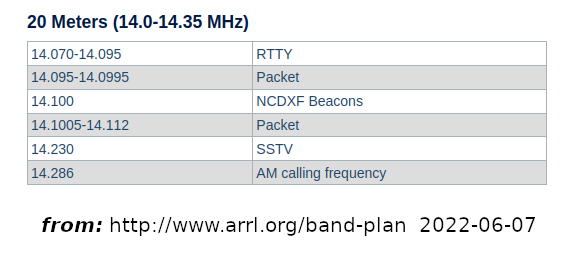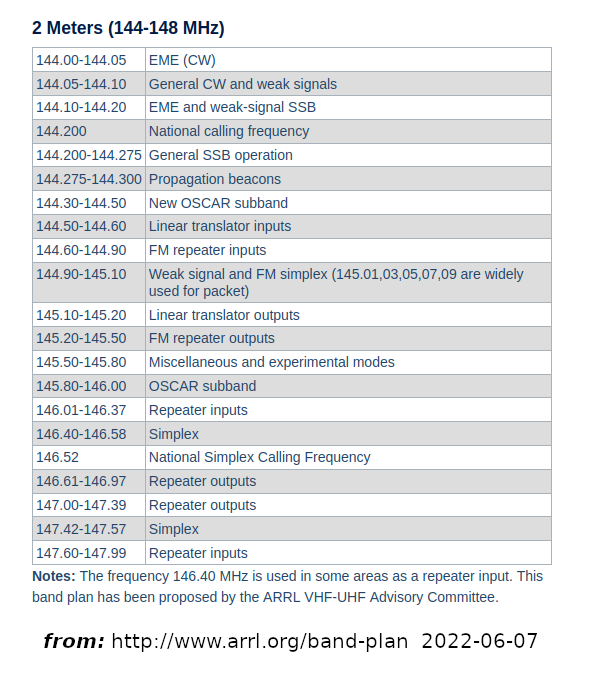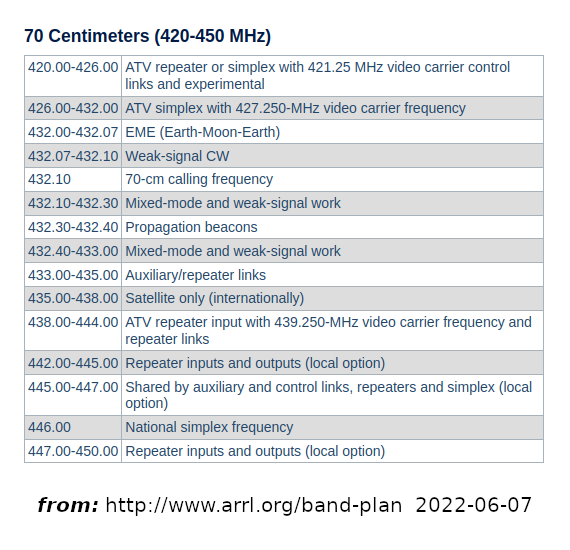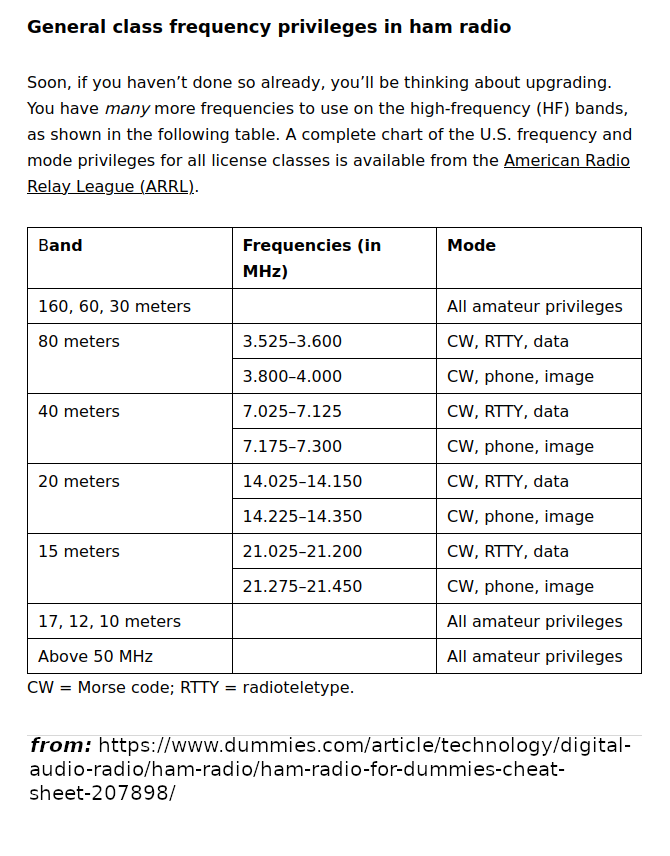Main menu
You are here
Ham Radio: On the Air
[last updated: 2022-06-07]
ham radio home page
-----
- on this page:
- "Q" codes
- Frequencies:
- calling frequencies
local frequencies of interest
MURS frequencies
local nets - Local (Col Gorge) Repeaters:
- propagation notes
- digital modes
- CB radio
- Logging
----------------------------------------------------------------------
- "Q" codes:
QRL - is freq in use?
QRM - receiving interference from other stations
QRN - I have static
QRP - low power transmission
QRS - send CW slower
QRV - I’m ready to receive
QSK - full break-in telegraphy
QSL - I acknowledge receipt
QST - calling all stations
QSY - changing frequencyKN listening for only certain stations
C (RST) chirpy or unstable CW signal
AR end of formal CW message - List of HF ham frequencies and generally accepted ie. voluntary modes to use: (link to:) ARRL
- Legal Frequencies and Modes for General Class Licensees:
However this chart does not tell the whole story, because it does not list allowed frequencies above 50MHz.
- Calling frequencies:
- 70cm: 446.000 (FM)
432.100 (SSB) - 2m: 146.520 (FM)
144.200 (SSB) - 151.820 un-official MURS calling freq
- 6m: 50.125
- 10m: 28.400
- 20m: 14.300 USB
- 70cm: 446.000 (FM)
- Local frequencies of interest:
162.400 NOAA weather
154.830 Wasco county sherrif dispatch
155.01 City of TD police dispatch
151.940 most common emergency freq
156.800 global distress freq (monitored by Coast Guard)
145.975 AO-7 beacon 09/25 – 12/26
St Vincent: 3.815 LSB & 7.188 LSB - MURS frequencies: - no license required?
- Channel Frequency Channel name
1 151.82 MHz MURS 1
2 151.88 MHz MURS 2
3 151.94 MHz MURS 3
4 154.57 MHz Blue Dot - Nets:
- Monday 8pm 444.700 Stacker GEAR check-in net
- Local (Col Gorge) Repeaters:
- Propagation:
- 6-meters:
Best at sunspot maximum, with solar flux 150 - 200, via F-layer skip
May - Jly "sporadic-E" can work well (peak at solstice in June) (openings typ last a few hours)
auroral, meteor-scatter, transequatorial and moonbounce can also be used - HF waves must pass through the D layer on their way up to be reflected by E or F layer to come back and give long-distance, over-horizon communication. They pass through the D layer both on the way up and again on the way back down. If the D layer is "active" then it will attenuate the signal passing through and propagation is worse.
- 6-meters:
- digital modes
- CB radio:
HF, 26.9650 MHz to 27.4050 MHz (40 channels), power output is 4 watts for AM and FM and 12 watts PEP for SSB.
Channel 9 is reserved for emergencies, and channel 11 is a calling channel. - Logging:
- QRZ
- Log Book of the World
.
.
.
eof




